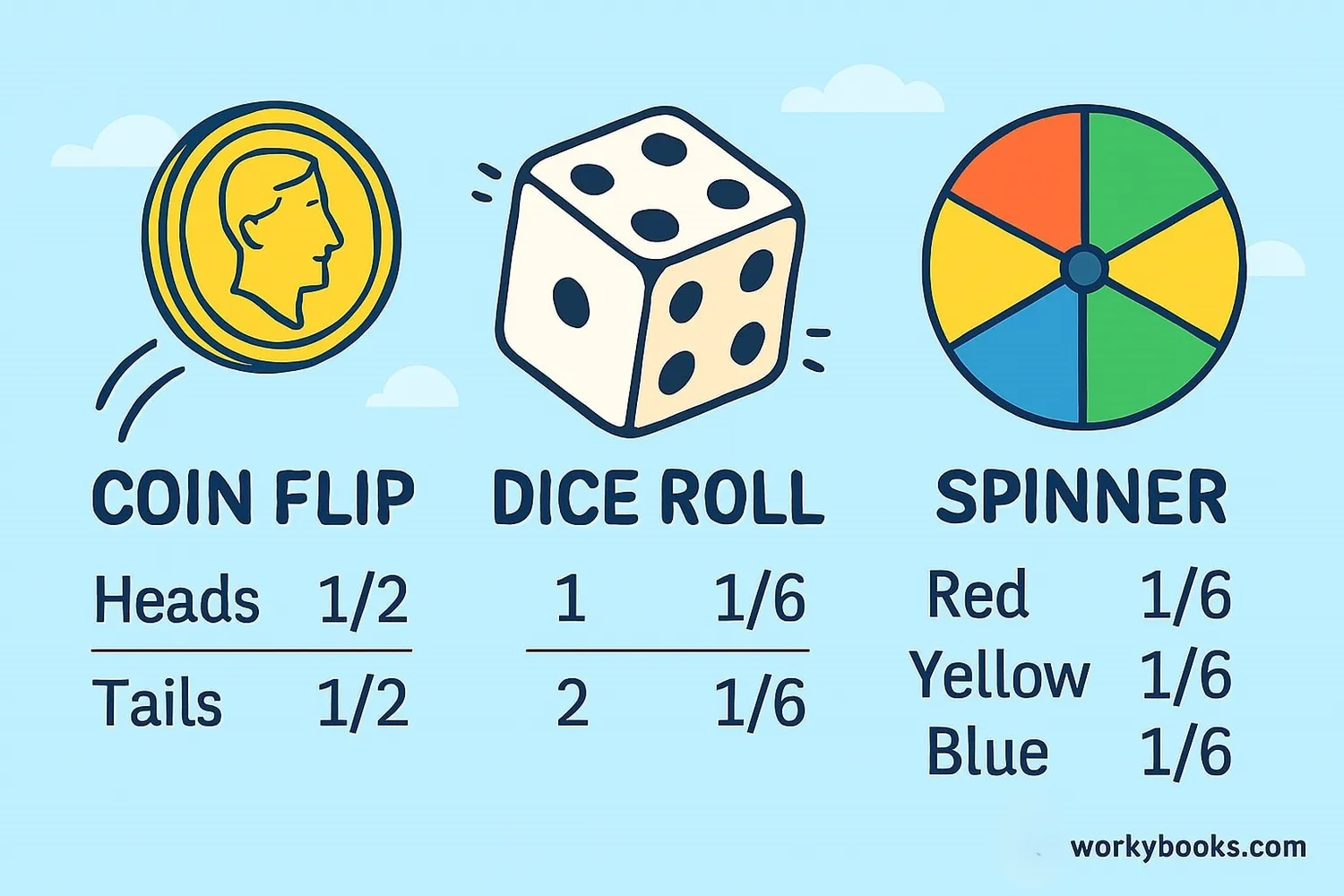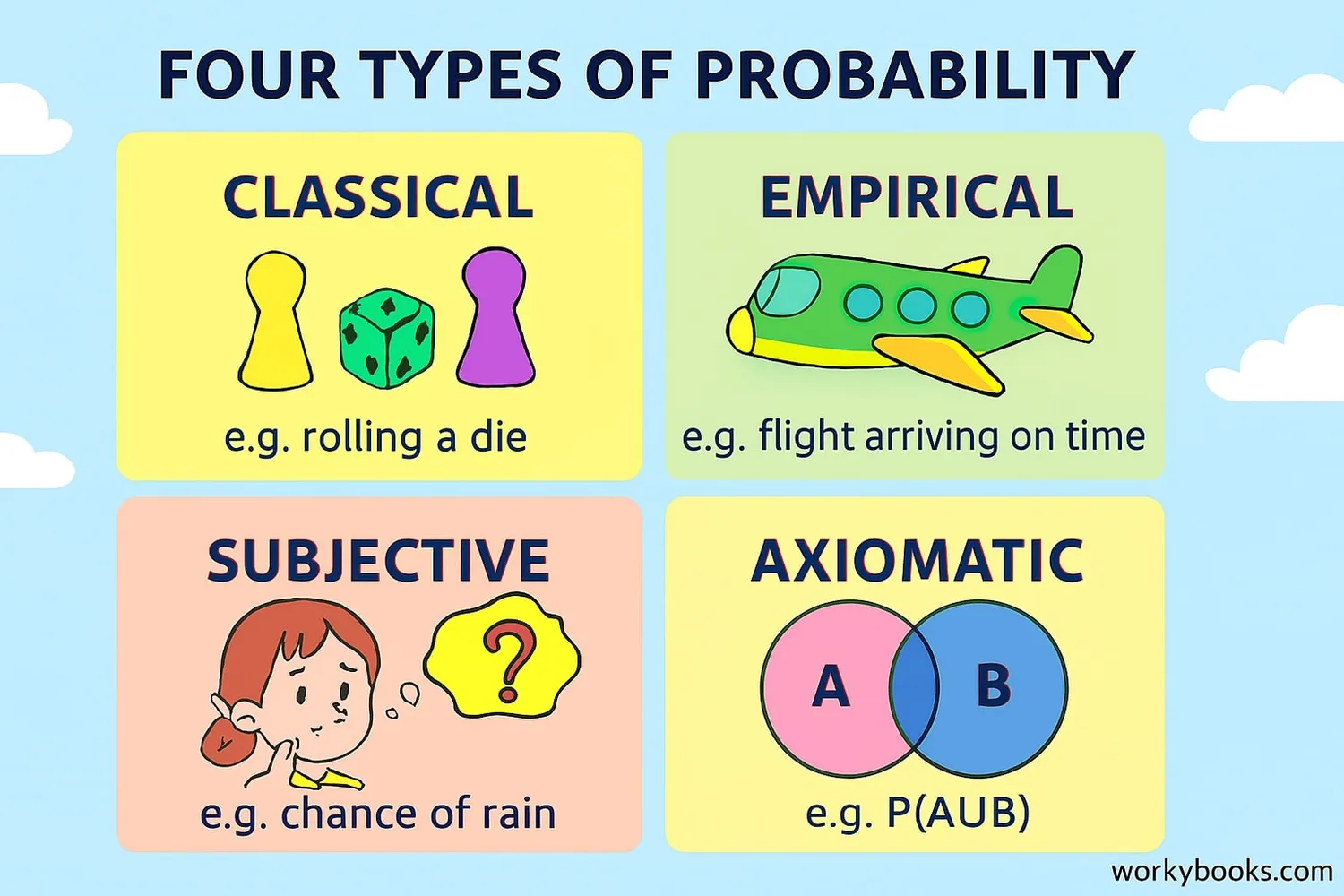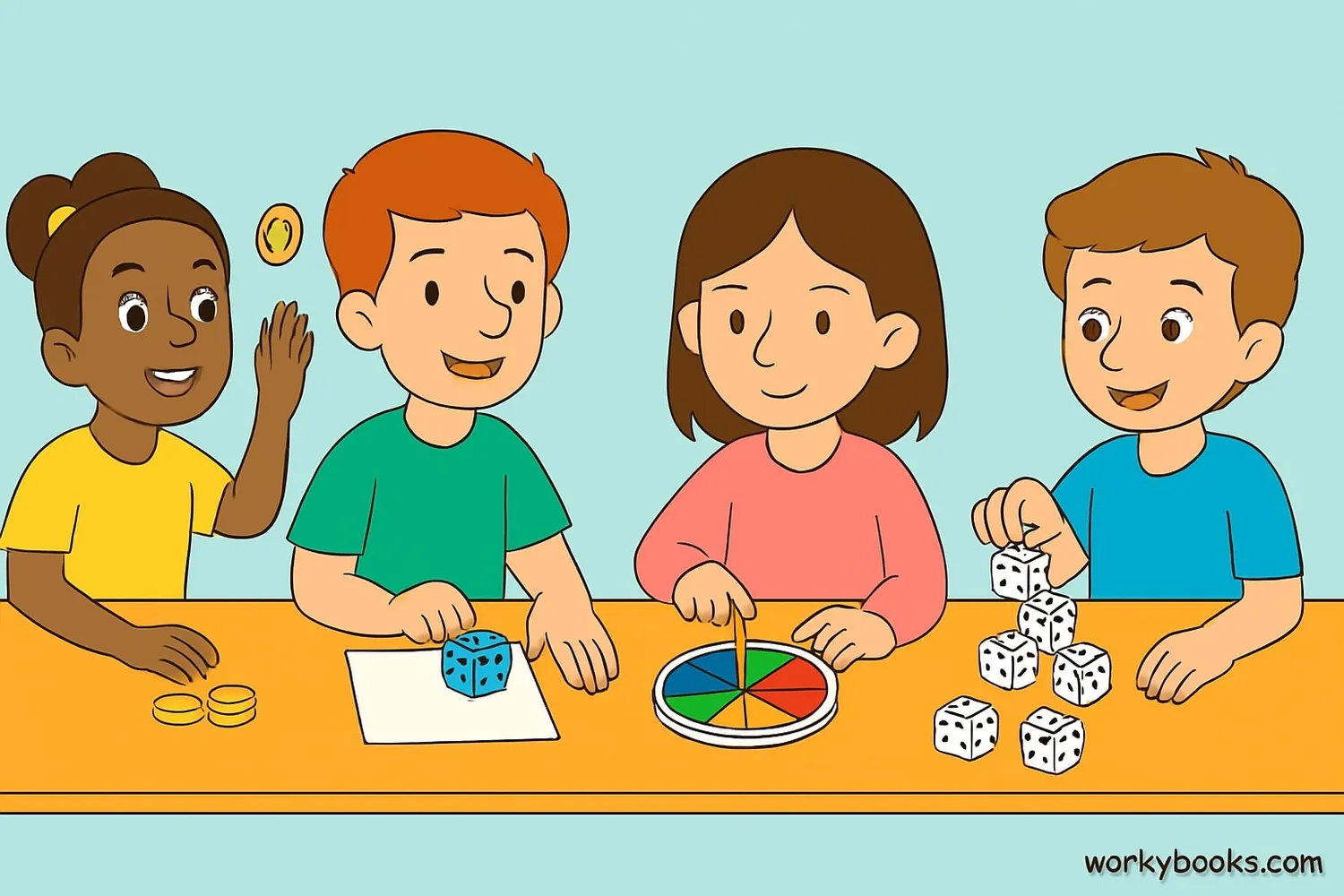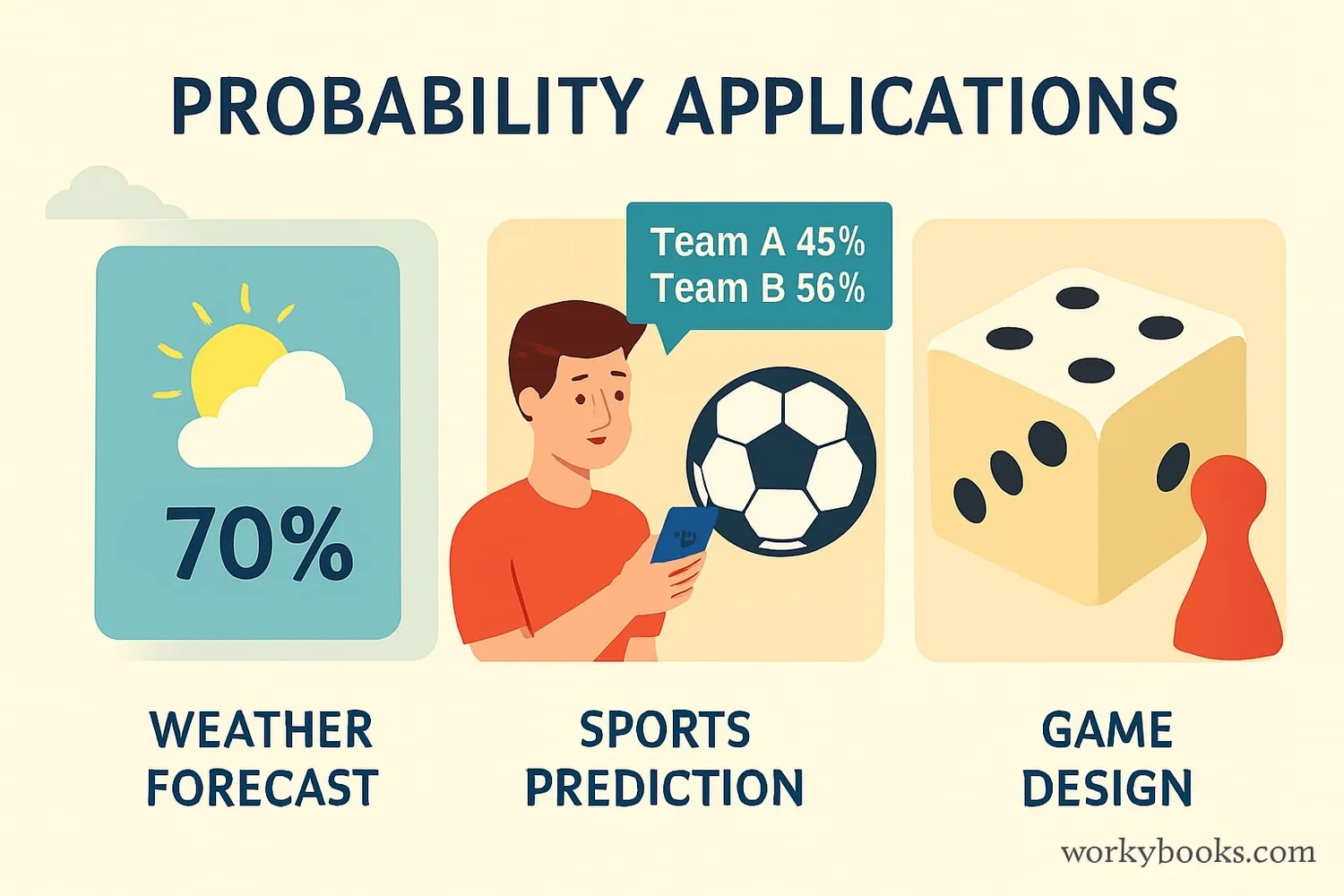Probability - Definition, Examples, Quiz, FAQ, Trivia
Discover how chance works with coins, dice, and everyday events
What is Probability?

Probability is the mathematics of chance and likelihood. It helps us understand how likely something is to happen.
Think about flipping a coin. What are the chances it lands on heads? Or rolling a die - what number is most likely to come up? These are probability questions!
We measure probability on a scale from 0 to 1:
Probability Formula
Key Concept
Probability always ranges from 0 (impossible) to 1 (certain). The higher the probability, the more likely an event is to happen.
Important Probability Terms
Let's learn some important words used in probability:
Experiment: Any activity with uncertain results (like flipping a coin or rolling a die)
Outcome: A possible result of an experiment (heads or tails for a coin flip)
Sample Space: All possible outcomes of an experiment (for a die: 1, 2, 3, 4, 5, 6)
Event: A specific outcome or group of outcomes (rolling an even number)
Favorable Outcome: An outcome that matches what we're looking for (rolling a 4 when we want a 4)
Random Experiment: An experiment where we can't predict the outcome (like spinning a spinner)
Equally Likely Events: Outcomes with the same chance of happening (each face of a fair die)
Mutually Exclusive Events: Events that can't happen at the same time (rolling both a 2 and a 5 on a single die)
Types of Probability

There are different ways to think about and calculate probability:
1. Classical Probability: Based on known possible outcomes (like with dice or cards).
Formula: P(A) = Number of favorable outcomes ÷ Total outcomes
2. Empirical Probability: Based on actual experiments and observations (flipping a coin 100 times)
Formula: P(A) = Number of times event occurred ÷ Total trials
3. Subjective Probability: Based on personal belief or opinion (thinking your team has an 80% chance to win)
4. Axiomatic Probability: A mathematical approach using rules and principles
Remember
For simple games with known outcomes (like dice or coins), we use classical probability. For real-world events where we collect data, we use empirical probability.
Fun Probability Experiments

Let's explore probability with some simple experiments you can try:
Coin Toss:
- Sample Space: Heads, Tails
- P(Heads) = 1/2 = 0.5
- P(Tails) = 1/2 = 0.5
- Sample Space: 1, 2, 3, 4, 5, 6
- P(rolling 3) = 1/6 ≈ 0.167
- P(rolling even) = 3/6 = 0.5
- Standard deck has 52 cards
- P(drawing a heart) = 13/52 = 0.25
- P(drawing a king) = 4/52 ≈ 0.077
Experiment Tip
The more times you repeat an experiment, the closer your results will get to the theoretical probability!
Real-World Probability Examples

Probability isn't just for games - we use it every day!
Weather Forecasting: When a meteorologist says "30% chance of rain," they're using probability based on similar past weather patterns.
Sports Predictions: Analysts calculate the probability of teams winning based on their past performance.
Game Design: Video game designers use probability to make games exciting and fair.
Stock Market: Investors use probability to estimate how likely stocks are to go up or down.
Medical Decisions: Doctors use probability to decide which treatments are most likely to help patients.
Probability Practice Quiz
Test your probability knowledge with this 5-question quiz. Choose the correct answer for each question.
Frequently Asked Questions
Here are answers to common questions about probability:
Probability Trivia
Discover interesting facts about probability:
Origins of Probability
Probability math began in the 17th century when mathematicians Blaise Pascal and Pierre de Fermat studied games of chance. They wanted to understand how to fairly divide winnings when a game was interrupted.
Probability in Nature
Many animals use probability without knowing it! Bees calculate the most probable locations of flowers based on past experience, and birds assess the probability of finding food in different areas.
Dice Through History
The oldest known dice date back over 5,000 years to ancient Mesopotamia. Early dice were made from animal bones, stones, and pottery. The standard cubic die with dots emerged around 600 BCE.
Space Calculations
NASA uses probability for space missions! When launching rockets, they calculate the probability of success based on thousands of factors. The probability of success for the first moon landing was estimated at just 60%.





